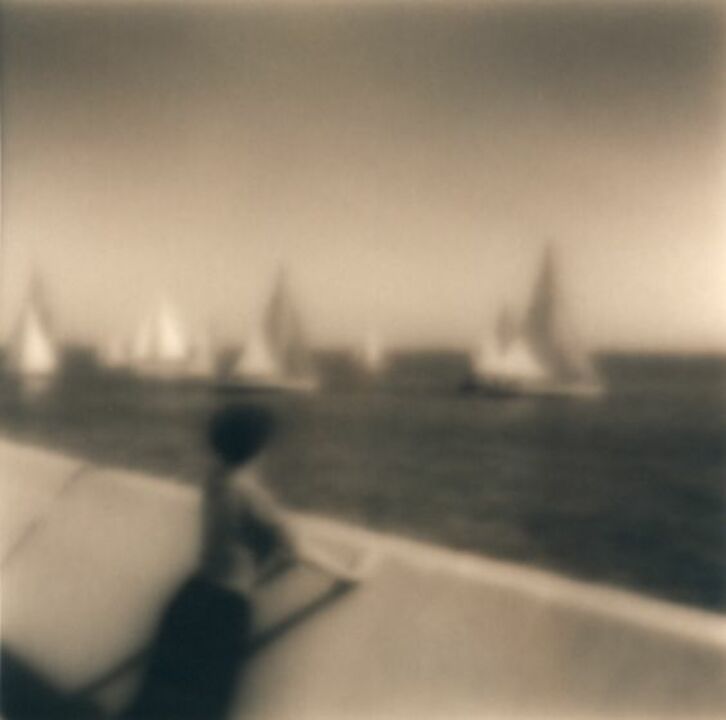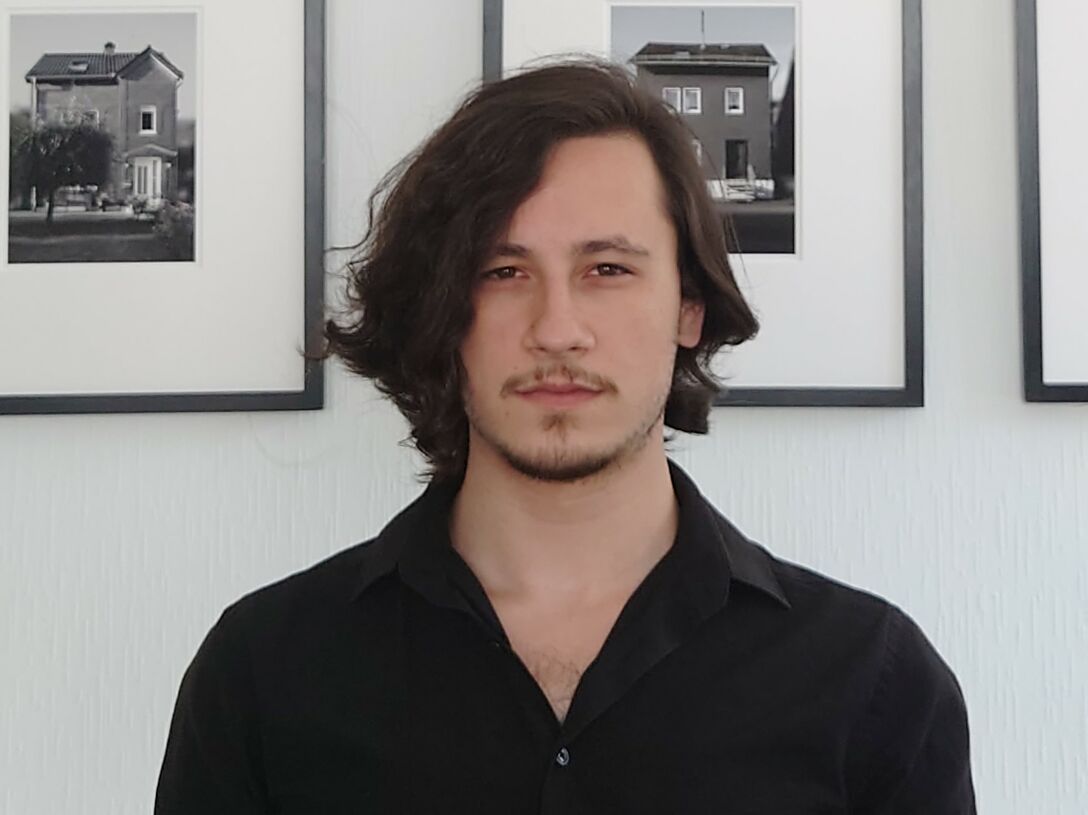Ken Rosenthal: Memories of Noone
Ken Rosenthal’s pieces of artistic work are a stroll through a gallery of faded memories. One is gazed upon by blurred reminiscences of past moments which have never happened; or maybe visions of a blurred future that will never be. The pictures appear wrapped in a soft-flowing, translucent veil, softening the edges and creating vivid phantoms and crawling shadows, instilling Rosenthals art with a romantic life well known by those minds troubled by reveries.Meanwhile, the subject of his art is incredibly common: We see pictures of children and pets, scenes at the beach, and especially his earlier pieces of work feature depictions of plant life and wilderness. These subjects are so general that almost everyone in the Western world can easily identify with them up to a point where, ironically, this identification becomes a paradox. Rosenthal himself explains it this way:
“Years ago, while paging through albums of family photographs, I was struck by the realization that many of the pictures that were bringing back strong memories occurred before I was born, or at times or places I was not present. These memories were vivid, yet were indeed false memories. Fascinated with how many of our recollections can be attributed to a photograph, dream or story as opposed to an actual experience, I began to cull imagery from archives of family photographs and personal work.“
A dreamlike space
Rosenthal’s art oscillates therefore in an undefined, dreamlike space between the personal and the common. One might even find this rather unsettling. Everyone knows these pictures; their matrix is engrained in us by our socialisation – yet they are completely foreign, like a dream one tries to remember after waking. The more one tries to focus his or her gaze on the dream-experience the more opaque and grotesque it becomes until all clear edges have faded. This aesthetic is driven by a very Freudian idea of the dream as something that can never convey its own true content because this content is ultimately incommensurable, even if it addresses the observer itself. We might never understand what makes Rosenthal’s photography so appealing, so personal to us, because there are no words to describe, no imagery to capture our personal joy and pain and sorrow we throw into these anonymous pictures. All they can do is remind us of this incomprehensible thing we call humanity – a vivid phantom, a crawling shadow, blurred by fear and longing.
Ken Rosenthal: No Title

Painterly Aesthetics
While Rosenthal’s early works are still defined by the characteristic sharpness of photography, it is in his series, titled Seen and not Seen, where Rosenthal starts to imbue his art with the marvellous mysticism that makes common things strange to us and gives them the qualities of a half-remembered memory. This blur, which has become quite specific for his artistic work, does not only evoke the impression of a memory, it is almost a collective memory in itself. It is a throwback to the early days of photography, before technological advancement guaranteed the possibility of radical sharpness.
From a modern perspective it might seem rather absurd, but even those old photographs were already praised for their sharpness and their ability to show details which the human perception might have easily overlooked. Ironically it was exactly this level of sharpness and detail that prevented many observers to call photography a form of art. Those whose eyes were accustomed to the soft and gentle forms of late-nineteenth-century painting could not understand the experience photography offered as an inherently artistic one. A photographer was able to show the world and document its details, but an artist had to show something that goes beyond the mere power of sight – an experience that speaks to the senses as much as to the soul. A piece of art which tried to show everything was eventually deemed to show nothing worthwhile at all. Those photographers who tried to accommodate these expectations were called pictorialists. They tried to marry their works to a more painterly aesthetic by blurring their pictures and composing them akin to an idea what an ‚artistic‘ picture should look like. Even though these artists and Rosenthal are divided by a century of art history which has accepted and advocated for sharpness, there are those who call Rosenthal a pictorialist. But is it true?
Pictorialism?
On the surface both use blurriness to combat an aggressive sharpness and create a space for the fantastic and imaginative. But gone are the attempts of painterly imitation; gone are those fragments of bourgeois vulgarity. Pictorialism was, to loosely quote Clement Greenberg, an endeavour to conceal photography by the means of photography. Rosenthal’s photography on the other hand is more closely related to the objet trouvé. He either reuses photographic material in an attempt that is similarly alienating and intriguing or uses photography to passionately trouble our perception of everyday objects. His art never tries to look beyond the veils of uncertainty, for that would be foolish. Instead, his pictures themselves are veils of uncertainty, covering spaces of transgression where one might find nothing but traces, leading to places familiar and unfamiliar at once. In this sense, his art seems more kindred to the mystical works of surrealists; to the gloomy Parisian streets and cafés of Brassaï; to the gently masked scenes of Jean Epstein.
The common and the personal are often imagined as perfectly incompatible opposites. Especially as political terms they can be found imagined as ravenously opposing counterparts. But Rosenthal’s art opens up a space where one is invited to linger and meditate on the meaning of this opposition. Maybe we can accept that it is not frightening to find something foreign in ourselves. Maybe we can realize our own selves in the common.
Contact
Klompching Gallery
89 Water Street
Brooklyn, NY 11201
United States of America
info@klompching.com
www.klompching.com
Author

Kende Bors, born in 1994, Marosvásárhely
Has a B.A. in art history and german literature. Studies literature mediation.
Internship: Summer 2022
Special Interests: Art and literature of the Décadence and cultural theory.








